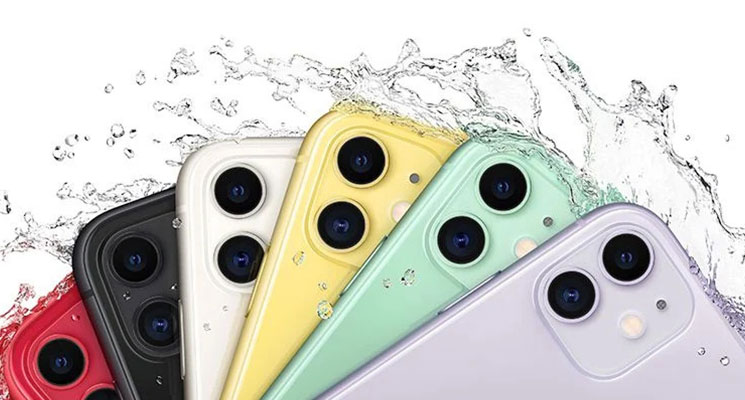Since Steve Jobs first unveiled the original iPhone to the public 12 years ago, the company has sold hundreds of millions of smartphones. Now let’s examine the iPhone’s past to discover how the most significant piece of 21st-century technology has changed.
The first iPhone (2007)
The first iPhone version, commonly known as the 2G, introduces us to the now-familiar home button and a style that has so far more-or-less endured.
Specifications
- 3.5in LCD screen
- 320 x 480 resolution
- 115.5mm x 62.1mm x 12.3mm
- Bluetooth 2.0
- 8 or 16GB flash memory
- 2MP rear camera
iPhone 3G (2008)
This second-generation handset brought new hardware features like 3G connectivity and iOS 2.0’s App Store for the first time.
Specifications
- 3.5in LCD screen
- 320 x 480 resolution
- 115.5mm x 62.1mm x 12.3mm
- Bluetooth 2.0
- 8 or 16GB flash memory
- 2MP rear camera
iPhone 3GS (2009)
The 3GS was the next device on Apple’s list; it was released a year after the 3G model.
There were many upgrades, including a better camera, quicker performance, and voice control.
Specifications
- 3.5in LCD screen
- 320 x 480 resolution
- 115.5mm x 62.1mm x 12.3mm
- Bluetooth 2.1
- 8, 16, or 32GB flash memory
- 3.2MP rear camera with VGA video at 30fps
iPhone 4 (2010)
With the release of the iPhone 4 in 2010, Apple made changes to the appearance of their smartphone, with its smaller frame being a standout feature. Moreover, the A4 system-on-chip, FaceTime video chat, and Retina Display appeared first.
Specifications
- 3.5in LCD screen
- 640 x 960 resolution
- 115.2mm x 58.6mm x 9.3mm
- Bluetooth 2.1 and wi-fi
- 8, 16, or 32GB flash memory
- 5MP rear camera with HD video (720p) at 30fps
- 0.3MP VGA front camera (480p) at 30fps
iPhone 4S (2011)
Apple added the letter “2011” to the end of its most recent model to denote its numerous updates. The 4S upgraded to the A5 chipset had a better camera, introduced Siri, and was integrated with services like iCloud and Twitter.
Specifications
- 3.5in LCD screen
- 640 x 960 resolution
- 115.2m x 58.6mm x 9.3mm
- Bluetooth 4.0 and wi-fi
- 8, 16, 32, or 64 GB flash memory
- Sony IMX145 8MP rear camera with HD video (1080p) at 30fps
- 0.3MP VGA front camera at 30fps (480p)
iPhone 5 (2012)
The iPhone 5 was one of those “blinks, and you miss it” items. It served as a kind of bridge between the 4S and the 5C/5S devices for almost a full year before being discontinued. Yet there were some noticeable modifications, like a bigger screen and the introduction of the Lightning connector.
Specifications
- 4in LCD screen
- 640 x 1136 resolution
- Bluetooth 4.0 and wi-fi
- 16, 32, or 64GB flash memory
- Sony 8MP rear camera with HD video (1080p) at 30fps
- 1.2MP HD front camera (720p) at 30fps
iPhone 5S (2013)
The 5S, in contrast to the 5C, upgraded from the 5 with the addition of the A7 system-on-chip (rather than the A6).
A new home button design with a laser-cut sapphire cover, fingerprint recognition, and an updated camera with a larger aperture and dual-LED flash were among the new features.
Specifications
- 4in LCD screen
- 640 x 1136 resolution
- Bluetooth 4.0 and wi-fi
- 16, 32, or 64GB
- 8MP rear camera with HD video at 30fps (1080p) or 120fps (720p)
- 1.2MP HD front camera (720p)
iPhone 6 (2014)
The screen, for the first time, folded around to the aluminium casing on the iPhone 6 Plus, which included Apple’s A8 CPU and a modified design.
Specifications
- 4.7in LED-backlit screen
- 1334 x 750 resolution
- Bluetooth 4.0 and wi-fi
- 16, 64, or 128 GB flash memory
- 1.2MP front-facing camera with HD (720p) video
Hello to the Future, September 2017
The world was presented to the 4K Apple TV, Apple Watch Series 3, iPhone 8, iPhone 8 Plus, and iPhone X at the first-ever Apple event at the Steve Jobs Theater in Cupertino, California. A momentous occasion, highlighted by the debut of the iPhone X (in November), to mark the tenth anniversary of the first iPhone.
The iPhone X was the first Apple phone to feature an edge-to-edge screen, wireless charging, and an OLED display. The home button was eliminated, and Face ID and Animojis now allow users to unlock their phones with just a glance.
September 2018: Big Screens
Apple improved the iPhone X from the previous year to produce the iPhone XS, iPhone XS Max, and iPhone XR. The super retina iPhone XS and iPhone XS Max include the largest iPhone display ever, faster Face ID, a more innovative and more potent processor, and a ground-breaking dual-camera system.
October 2020: 5G iPhones
A few new colours and four 5G-compatible phones are part of the launch of the iPhone 12 and iPhone Pro Max. The new series has a Ceramic Shield, a 16-core Neural Engine, an A14 Bionic chip, and Ceramic Shield, which has a four times higher drop performance. With 5G, you can enjoy blazing-fast speeds, extremely low latency, higher-quality video streaming, more responsive gaming, and real-time interaction.
September 2021: iPhone 13 and Friends
In September 2021, Apple released the iPhone 13 and iPhone 13 Pro, which added the company’s most advanced dual-camera setup to date. The iPhone 13, iPhone 13 Pro, iPhone 13 Pro Max, and iPhone 13 mini are the best iPhone models yet, thanks to their powerful A15 bionic chip, robust build, and significant improvement in battery life.
iPhone 14 and 14 Plus
The bigger Plus model replaces the iPhone 13 mini and has the same form factor and price range as the iPhone 14 and the new 14 from the previous year. Both use a newer Bionic A15 processor, which is the same technology found in the 2021 versions and has a longer battery life.
Final Words
It is impossible to argue with Apple’s iPhone’s impact on society. It is the only consumer technology industry. No one can beat its influence on people.







